#gertrude welcker
Text

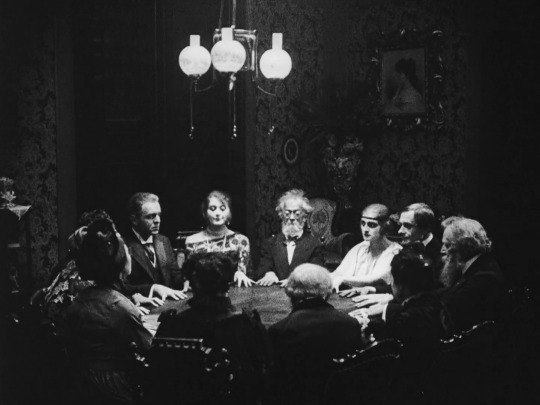





"There is a foreign element among us!"
Dr. Mabuse, der Spieler (1922) | dir. Fritz Lang
#rudolf klein-rogge#gertrude welcker#alfred abel#dr. mabuse the gambler#dr. mabuse der spieler (1922)#dr. mabuse#countess dusy told#count told#1920s#fritz lang#classic film#silent film#german cinema#weimar cinema#german expressionism#screencaps#séance#classicfilmsource#dailyworldcinema#my post
238 notes
·
View notes
Text
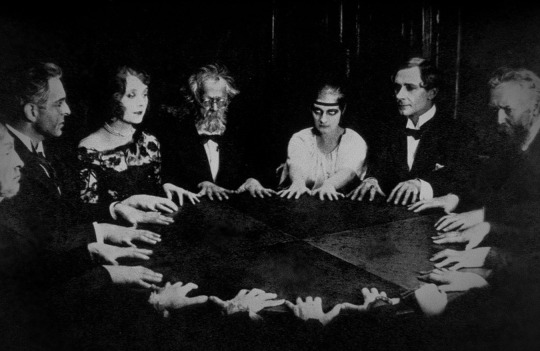
Dr. Mabuse, der Spieler (1922)
#dr. mabuse der spieler#dr. mabuse the gambler#rudolf klein rogge#alfred abel#gertrude welcker#1920s movies#fritz lang#mystery#thriller
86 notes
·
View notes
Text


Films Watched in 2023:
72. Algol - Tragödie der Macht/Algol - Tragedy of Power (1920) - Dir. Hans Werckmeister
#Algol: Tragödie der Macht#Algol: Tragedy of Power#Hans Werckmeister#Emil Jannings#Hanna Ralph#Erna Morena#Ernst Hoffmann#Gertrude Welcker#Käthe Haack#Sebastian Droste#Silent Cinema#German Expressionism#Films Watched in 2023#My Edits#My Post
5 notes
·
View notes
Photo




6 notes
·
View notes
Text
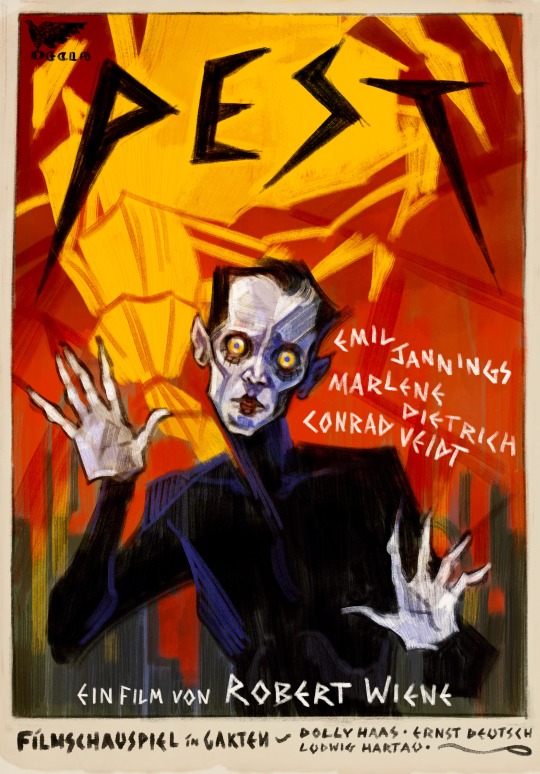
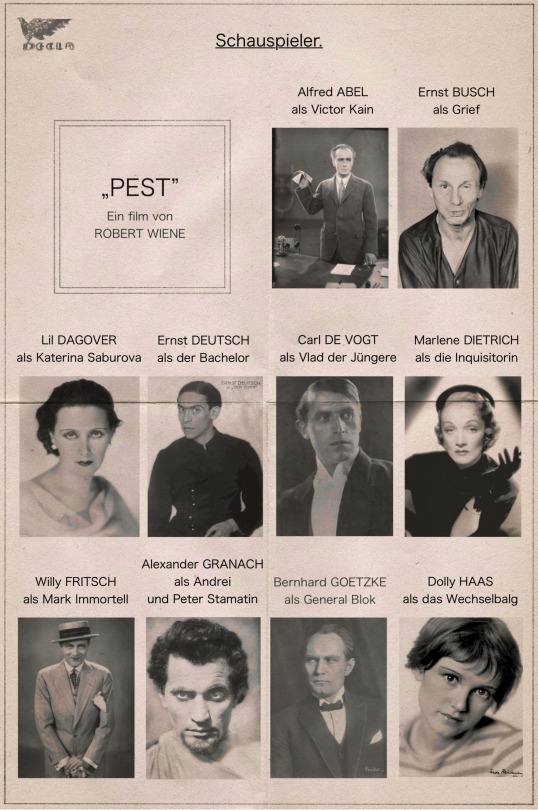

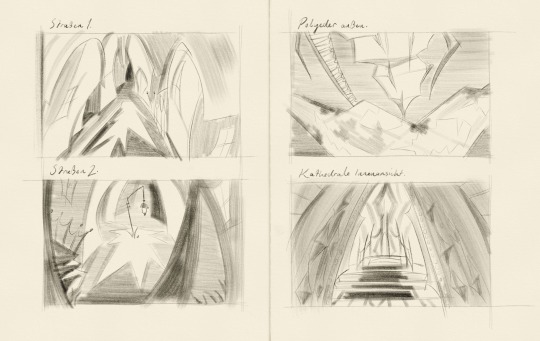

pathologic but it's a lost 1920s german expressionist film [id under cut]
[id:
image 1: a digital drawing of a fake poster, using bright colours and rough, painterly brushstrokes. the title, 'pest' (german for 'plague'), is written at the top in spiky black text. in the foreground a man dressed as a tragedian is staring intently at the viewer, his hands raised and splayed as if in horror. in the background, the town is framed against a red sky, with the polyhedron in yellow behind.
images 2 and 3: fake casting sheets for the film, with the names of the actors and the characters they are playing above a black-and-white portrait photograph of them. all the text is in german. in english it reads:
'Pest', a film by Robert Wiene
Alfred Abel as Victor Kain
Ernst Busch as Grief
Lil Dagover as Katerina Saburova
Ernst Deutsch as the Bachelor
Carl de Vogt as Vlad the Younger
Marlene Dietrich as the Inquisitor
Willy Fritsch as Mark Immortell
Alexander Granach as Andrey and Peter Stamatin
Bernhard Goetzke as General Block
Dolly Haas as the Changeling
Ludwig Hartau as the Haruspex
Brigitte Helm as Anna Angel
Brigitte Horney as Maria Kaina
Emil Jannings as Big Vlad
Gerda Maurus as Yulia Lyuricheva
Lothar Menhert as Georgiy Kain
Asta Nielsen as Lara Ravel
Ossi Oswalda as Eva Yan
Fritz Rasp as Stanislas Rubin
Conrad Veidt as Alexander Saburov and Tragedian
Paul Wegener as Oyun
Gertrud Welcker as Aspity
image 4: four digital sketches of set designs for various locations. all are strongly influenced by expressionist imagery, using extreme angles, warped perspective, and dramatic shapes. they are labelled 'street 1' (a street lined with houses), 'street 2' (a square with a lamppost and a set of steps), 'polyhedron exterior' (the polyhedron walkway), and 'cathedral interior' (the dais at the far end of the cathedral).
image 5: four digital drawings in a black-and-white watercolour style, showing fake stills from the film. all are similarly distorted and lit by dramatic lighting. the first shows katerina's bedroom, with katerina standing in the centre of the floor. the second shows the interior of an infected house. the third shows daniil staring out of the frame in horror, one hand on his head and the other raised as if to ward something off. the fourth shows an intertitle with jagged white text reading 'the first day' against a dark background.
end id.]
#pathologic#artwork#conrad veidt#(i know there are many other actors but i dont have tags for them my bad)#anyway :D this has been my brain project for the past week or so i have been thinking about it so much#i have so many more things i want to draw for it but i am trying to hold myself back. for the sake of my Wrists#also obviously the cast list is way whiter than it should be for pathologic but german expressionist cinema was not particularly diverse an#i was trying to go for realism so apologies for that#i had so much fun with these i dont normally draw locations because i prefer drawing people but i found it so much more enjoyable#when i could mess around with the perspective and make stuff look wacky. thank you expressionism i love you expressionism#also it goes without saying that i was most heavily inspired by the cabinet of dr caligari (which is why i went with robert wiene. he would#do such a great job i think)#i hope you are all well my friends :D kiss you
440 notes
·
View notes
Photo
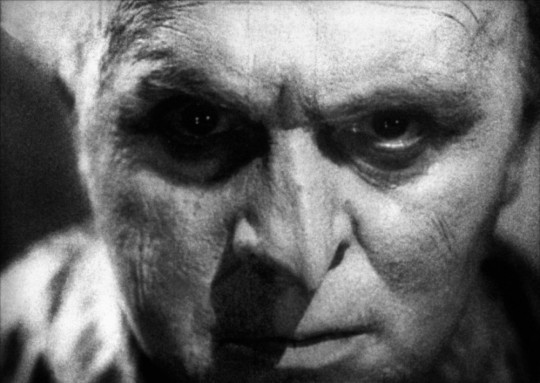
Rudolf Klein-Rogge in Dr. Mabuse the Gambler (Fritz Lang, 1922)
Cast: Rudolf Klein-Rogge, Aud Egede-Nissen, Gertrud Welcker, Alfred Abel, Bernhard Goetzke, Paul Richter, Robert Forster-Larrinaga, Hans Adalbert Schlettow, Georg John, Károly Huszár, Grete Berger, Julius Falkenstein. Screenplay: Thea von Harbou, Fritz Lang, based on a novel by Norbert Jacques. Cinematography: Carl Hoffmann. Art direction: Otto Hunte, Erich Kettelhut, Karl Stahl-Urach, Karl Vollbrecht.
Dr. Mabuse the Gambler is a four-and-a-half-hour movie, and I've seen two-hour movies that felt longer. It zips along because Fritz Lang never fails to give us something to look at and anticipate. There is, first and foremost, the almost literally hypnotic performance of Rudolf Klein-Rogge as Mabuse, a role that could have degenerated into mere villainous mannerisms. There is his dogged and thwarted but always charismatic opponent, von Wenk (Bernhard Goetzke), who seems on occasion to resist Mabuse's power by mere force of cheekbones. There is the extraordinary art decoration provided by Otto Hunte and Erich Kettelhut, which often gives the film its nightmare power: Consider, for example, the exceedingly odd stage decor provided for the Folies-Bergère performance by Cara Carozza (Aud Egede-Nissen), in which she contends with gigantic heads with phallic noses (or perhaps beaks), or the collection of primitive and Expressionist art belonging to the effete Count Told (Alfred Abel). The story itself, adapted from the novel by Norbert Jacques by Lang's wife-to-be Thea von Harbou, is typically melodramatic stuff about a megalomaniac psychiatrist, who uses his powers to become a master criminal. But l think it succeeds not only because it has so much to say about the period in which it was made but also because of our continuing fascination with mind control. It sometimes feels like there's a little Mabuse in everyone who seeks power. Somehow we continually lose our skepticism, born of hard experience, about the manipulators and find ourselves once again yielding to them. And somehow we usually, like von Wenk, find a way to pull ourselves back from the brink. But, as Lang himself experienced, we don't always manage to do so.
3 notes
·
View notes
Text
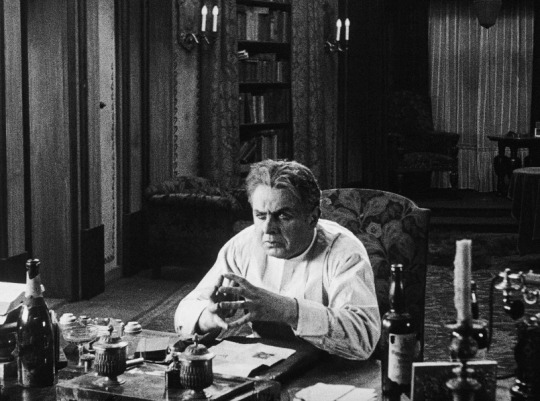
The 1922 film Dr. Mabuse, Der Spieler (“Spieler” can be translated as gambler or player) is a really good film, even if it might not seem appealing today. It’s very long, 4 hours and 30 minutes in total, and was released in two parts because of this. And being from 1922 it is of course a silent film.
Yet it earns its runtime by being actually rather good. Its director Fritz Lang was relatively young at the time, but he demonstrates a fine grasp of the craft of filmmaking. The storytelling is advanced for the time, yet easily understandable. There are some beautiful imagery in this, some really impressive shots and special effects work.
The star of the show is of course Dr. Mabuse himself, played by Rudolf Klein-Rogge, who is having a blast. He is a scheming mastermind criminal in the vein of Professor Moriarty and Fantomas. It’s great fun seeing Mabuse develop complicated schemes and wear elaborate disguises to execute. He has such skill with hypnosis that it makes him border on a comic-book supervillain.
The film in general is a major influence on modern crime thrillers. You get an early feature film car-chase and a climactic shoot-out scene.
It’s great pulpy fun, and Klein-Rogge as Mabuse predictably dominates the film. The “good” opposition is kinda weak in comparison, although Bernhard Goetzke as the heroic detective and State prosecutor Wenk is better than most in providing a good guy counterpart to such a charismatic villain. I really liked Gertrude Welcker as a sybaritic but sympathetic aristocratic woman.

The interpretation of Mabuse is two-fold. Mabuse isn’t explicitly identified as jewish, but an anti-semitic interpretation can easily be made. Some of his disguises definitely are based on jewish stereotypes. His main persona is a psychoanalyst, a profession associated with jewish people because of Freud. He is an inherently scheming and conspiratorial figure. He is also associated with symbols of Weimar German decadence, such as drugs, gambling, and prostitution. He hatches economic conspiracies with counterfeit money and stockmarket manipulation which reflect German economic problems and ascribe them to a conspiratorial bad actor. Both the writer of the original novel Norbert Jacques and screenwriter Thea von Harbou and actor Klein-Rogge later ended up working with the nazis (how much it was ideology or opportunism is hard to tell in all three cases).
Yet director Fritz Lang had Jewish roots and had to flee Nazi Germany. And an anti-semitic reading is possible, but never remotely made explicit. The other reading is that Mabuse is a figure of the manipulative authoritarian leader, a premonition of the rise of Hitler, which is how Lang viewed him later on.
You can read the film as a criticism of the Nietzchean rhetoric the naizs loved. Mabuse eventually reveals his justifications for his actions, which are a take on Nietzsche and his concept of the übermensch. He thinks he is beyond the law and conventional concepts of morality due to his superior abilities and strong will. He outright cites “the will to power.” And in the end his nietzschean ideals are disproven, as he ends up defeated. He locks up blind people in a room to count his fake money for him, and when through his own mistakes ends up locked in the same room with no chance of rescue, it breaks him. He can’t handle the same fate he condemns disabled people to. Like Nietzsche in real life, Mabuse ends up in a state of near-catatonia. In the sequel made by Lang about a decade later he is in a mental hospital.
Mabuse is a very ambiguous figure and which way you read the film is up to you. Still, it’s still great entertainment over a hundred years after its release.
4 notes
·
View notes
Text

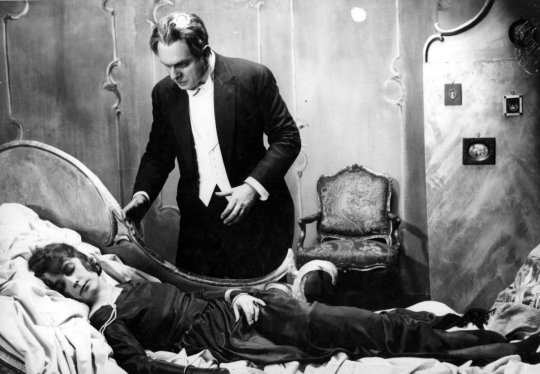
Gertrude Welcker — 16/07/1896 —01/08/1988)
Local de Nascimento: Dresden (Alemanha)
Atriz
Filmes:
Dr. Mabuse, o Jogador (Dr. Mabuse, der Spieler/1922)
0 notes
Photo

Gertrude Welcker - Dr Mabuse
49 notes
·
View notes
Photo

Gertrude Welcker - Dr Mabuse (outtake)
9 notes
·
View notes
Photo

still image of German actress Gertrude Welcker in her film debut Eine Nacht in der Stahlkammer (A Night in the Steel Chamber) 1917
39 notes
·
View notes
Text





"I have gotten to know something that until recently I didn't believe existed in the world, something that seems to me to be more valuable and more shattering than the strongest sensation...."
Gertrude Welcker in DR. MABUSE, THE GAMBLER (1922) | dir. Fritz Lang
#gertrude welcker#dr. mabuse the gambler#dr. mabuse der spieler (1922)#countess dusy told#1920s#fritz lang#classic film#silent film#german cinema#weimar cinema#german expressionism#filmedit#imageedit#classicfilmsource#dailyworldcinema#my post
55 notes
·
View notes
Text

9.9.21
#film#letterboxd#watched#dr. mabuse the gambler#fritz lang#aud egede-nissen#alfred abel#gertrude welcker#paul richter#georg john#grete berger
10 notes
·
View notes
Photo
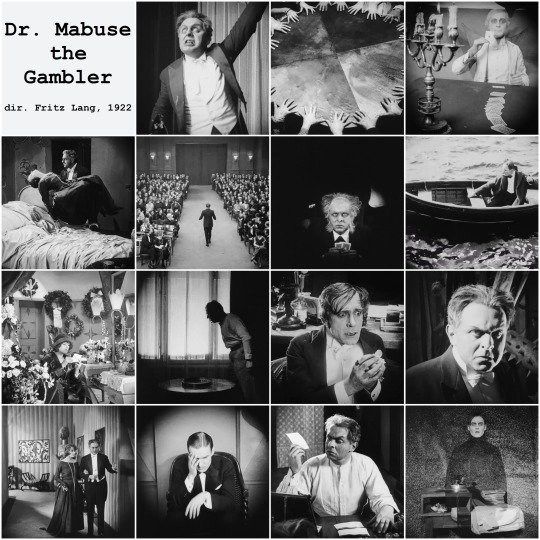
Dr. Mabuse the Gambler
directed by Fritz Lang, 1922
#Dr. Mabuse the Gambler#Dr. Mabuse der Spieler#Fritz Lang#movie mosaics#Rudolf Klein-Rogge#Gertrude Welcker#Bernhard Goetzke#Aud Egede-Nissen#Alfred Abel#Paul Richter
9 notes
·
View notes
Photo
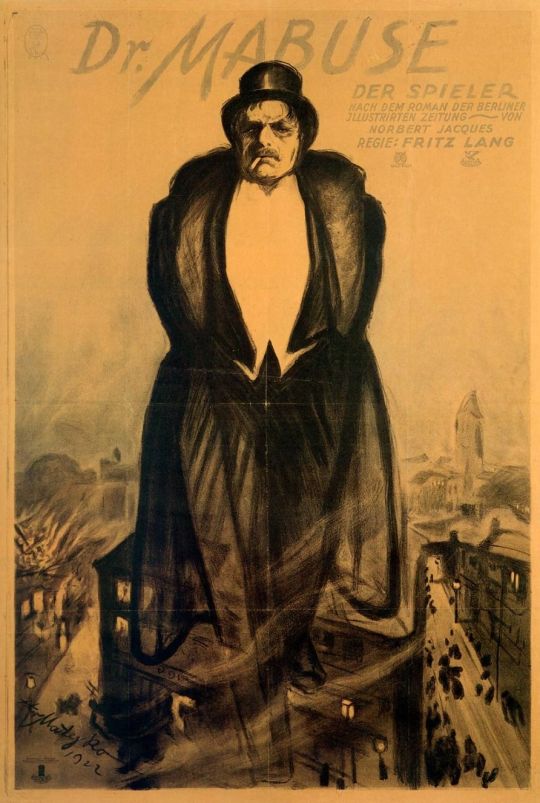
#dr. mabuse the gambler#rudolf klein rogge#aud egede nissen#gertrude welcker#alfred abel#bernhard goetzke#fritz lang#1922
1 note
·
View note
Photo


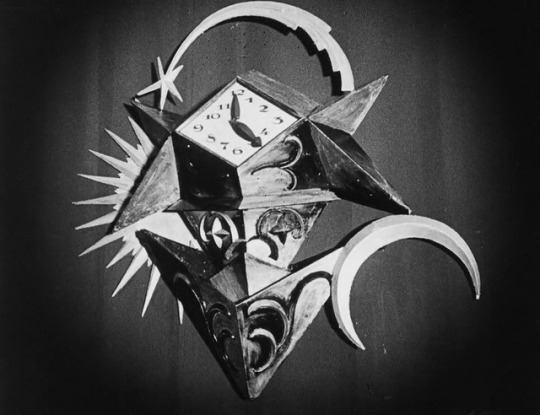

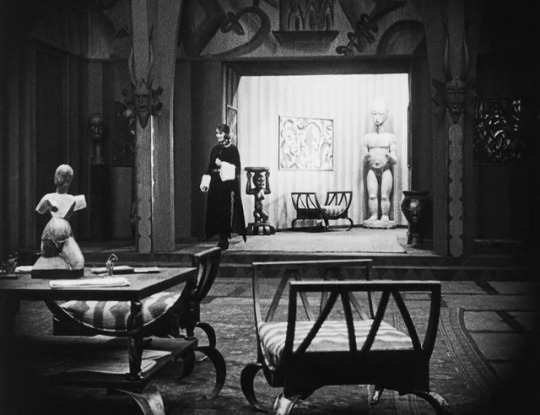
Dr. Mabuse, der Spieler | Part One: Der große Spieler: Ein Bild der Zeit | Fritz Lang | 1922
Art/house - Bernhard Goetzke, Gertrude Welcker
#Bernhard Goetzke#Gertrude Welcker#Fritz Lang#Dr. Mabuse der Spieler#1922#Der große Spieler: Ein Bild der Zeit#Dr. Mabuse
153 notes
·
View notes